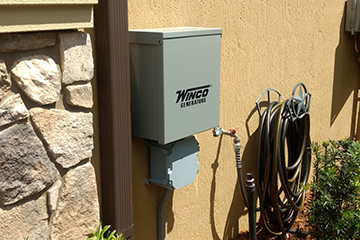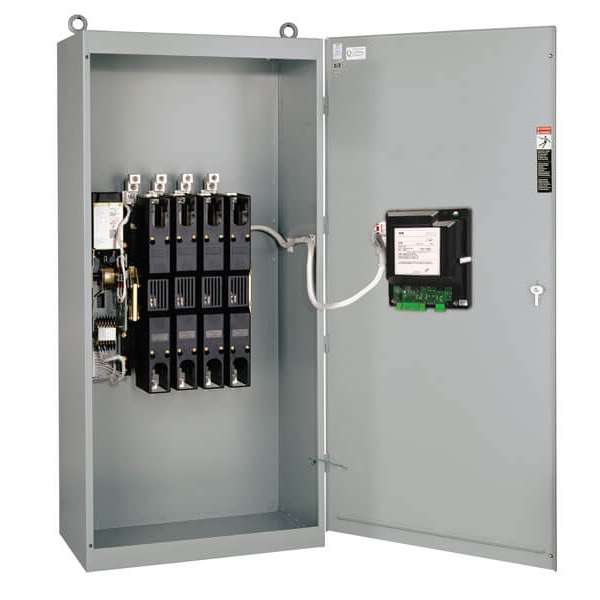Manual and automatic transfer switches are an important accessory when it comes to safely switching from utility power to backup power.
How they work
1. Manual transfer switch

When the power fails you need to get your generator set up. Normally you wheel it outside an place it where exhaust fumes cannot seem into windows, doors or vents. Next you need to connect the power cord between the generator and transfer switch. Once you have the generator running you will go to the transfer switch and manually switch from utility to generator power. Once you notice the utility power is back on you reverse the process.
2. Automatic transfer switch

The transfer switch will detect a utility failure and send a signal to the generator to start up. When the generator is at the correct voltage, usually within about 10-30 seconds, the transfer switch will connect power.
As soon as utility power is detected, the switch will signal the generator to shut down, and switch back to the utility power source.
Pros and cons of each system
1. Manual Transfer Switch
Pros –
- Your generator is most likely a portable generator and you will be able to move it around.
- Cost effective.
- You have full control.
Cons –
- You have to be present to switch between power sources.
- More work.
- Requires a little technical skill.
- You can run on generator power long after utility power is restored if you aren’t paying attention.
2. Automatic Transfer Switch
Pros –
- Easy to use.
- You do not have to be on site.
- Automatically tests itself.
- Less down time between transfer.
Cons –
- More expensive.
- Generator is permanently mounted.
Matching a transfer switch to a generator
Manual and automatic transfer switches can work with any type of generator. Generally, if you have a portable, towable, or PTO generator, you will select a manual transfer switch. Standby models, such as our PSS or diesel units, you will use an automatic transfer switch. If you have any questions or concerns, give us a call or contact your local electrician.

It seems you would need to maintain a battery source throughout all weather to
control the automatic transfer switch.
It’s great to see a discussion about manual and automatic transfer switches! Both options serve crucial roles in ensuring a seamless transition from utility power to backup power during outages. The manual transfer switch offers a reliable and straightforward solution. When the power fails, you can easily set up your generator, connect it to the transfer switch, and manually switch from utility to generator power. It’s a hands-on process, ensuring you’re in control of the power source. On the other hand, automatic transfer switches provide an added layer of convenience. With their automated functionality, they detect power outages and instantly switch to generator power without requiring your intervention. This can be particularly helpful if you’re away from home during an outage.